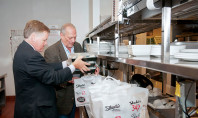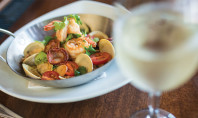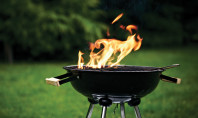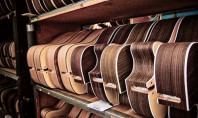All Abuzz for Mead
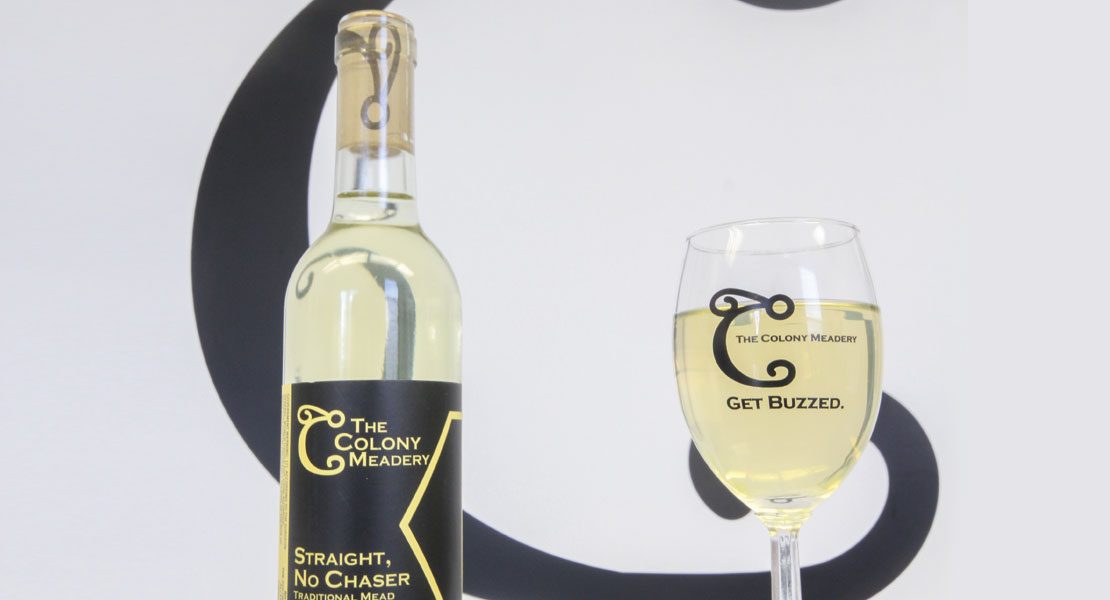
by Ann Wlazelek
Now brewing in Allentown is a honey of a new business called The Colony Meadery.
Mead, for the uninitiated, is an ancient alcoholic drink similar to wine but made from fermented honey instead of grapes. A meadery is where mead is made.
The Colony Meadery opened in January 2014 at the Bridgeworks Enterprise Center, 905 Harrison Street, where Mack Trucks used to build engines and the Allentown Economic Development Corp. now builds businesses.
Meadery owners Michael Manning of South Whitehall Township and Greg Heller-LaBelle of Bethlehem believe it is the first meadery in the Lehigh Valley and one of only three in Pennsylvania (others being in Birdsboro and Pittsburgh). They named it Colony in reference and reverence to the colonies of bees that make the honey.
Mead, for the uninitiated, is an ancient alcoholic drink similar to wine but made from fermented honey instead of grapes.
As the story goes, Manning, a long-time home brewer and IT specialist, met Heller-LaBelle at a beer-tasting event a few years ago. Manning ran out of homemade beer for the next event and decided to try mead. He knew it took only an hour to make mead instead of 6-7 hours to make beer. Heller-LaBelle, a marketing specialist, loved the result, which went on to win awards. At his suggestion, the two started their own meadery.
“Welcome,” Manning said one Saturday afternoon, when my husband Bruce and I and two friends entered the storefront for a half-hour tour and tasting. Manning stood behind a counter with a dozen bottles of flavored meads, ready for tasting. “Most are made from orange blossom honey, flavored with natural syrups, fruits and spices,” he told us. “All are my recipes.”
Small tables and chairs offered a place to sit, but none of us did. We each grabbed a glass, small pencil and copy of the tasting sheet, which lists the varieties of mead by name, flavor and alcohol content. This allows visitors to rate the mead by aroma and taste. It also proves handy for remembering which bottles to purchase at the end.
 The first mead Manning poured was “Tupelo Concession Stand Brawl,” which he said is made from honey produced from Tupelo tree blossoms. We agreed our first sip of mead tasted lighter than wine, with the same viscosity, and smelled a bit like honeysuckle. Its alcohol content was 9.5 percent.
The first mead Manning poured was “Tupelo Concession Stand Brawl,” which he said is made from honey produced from Tupelo tree blossoms. We agreed our first sip of mead tasted lighter than wine, with the same viscosity, and smelled a bit like honeysuckle. Its alcohol content was 9.5 percent.
The next, named “Straight, No Chaser,” was a lot stronger and sweeter, packing a bigger punch with 13 percent alcohol.
Manning and Heller-LaBelle had fun naming their meads, we discovered, as we continued sampling brews such as “Woofiedog,” that contains a pale ale hops; “Pikwant Field,” infused with strawberry and kiwi; and “Fred and Ginger,” tasted last because of its strong ginger flavor.
“Mo-Me-Doh” is named after the popular mixed drink Mohito. Both are flavored with mint and lime. In the works is a “Mar-puh-me-duh,” akin to the Mexican margarita, made from lime and tequila.
Between tastings, we asked lots of questions. “Where are the bees?” our friends wanted to know. Manning said Colony does not keep its own bees, preferring to purchase the honey. “Are there enough bees to meet the demand?” Yes, he answered, especially since more people are getting into beekeeping.
About 60-120 pounds of honey are needed to make one batch of mead, Manning said, adding that he will continue trying local honey, when available, but found that some recipes tasted medicinal, like eucalyptus.
When we asked more about the mead-making process, Manning led us into the production room. There it became apparent that mead-making requires a lot less room, time and capital than making wine or beer.
Thirteen plastic tanks of varying size lined the walls of the less-than-900-square-foot room. The largest, dubbed Bertha, holds 90 gallons. The smaller tanks, with names such as Willie and Titus, each hold 40 gallons. Manning built the tanks himself, fashioning the brackets that hold them upright, wrapping them with insulation for temperature control, and drilling holes for the couplings.
Fermentation of the honey, water and yeast takes about two weeks, during which time CO2 and sulphur are removed, Manning said. Then, the mead is transferred to the smaller tanks for flavoring.
“We shoot for 300 bottles from a batch,” he said.
Colony’s bottles hold 12 ounces, enough for a serving for two or tastings for four. Prices range from $10-$18, depending on the amount of honey and other ingredients, as well as the amount of time it takes to make the batch. Responding to a question, Manning said meaderies are licensed as wineries or limited wineries by the Pennsylvania Liquor Control Board. “It took us 14 months,” he said.
But Manning believes working as hard as bees to produce what ancestors considered the “nectar of the gods” has its pay-offs besides an ancient belief that mead can impart prophecy, poetry and fertility.
“Mead is going to be the next cider,” he said, referring to a boom the past 10 years in hard cider production. “You can go into Shangy’s [beer distributor in Emmaus] and if you’re looking for cider, you’ll find about two dozen selections there alone. The demand began to drive the variety, then the variety began to drive the demand. Mead is going through a similar renaissance.”
Jeff Herbert, who chairs the publications committee for the American Mead Makers Association (AMMA) and also owns a meadery in Prescott, AZ, agrees. Three years ago, he knew of only 60 meaderies in the United States. Now, he said, there are nearly 200 wineries that make mead, 150 of which make mead as their primary or only product. Also, the AMMA’s first study tracking mead shows sales swarming 130 percent from 2012 to 2013.
Currently, bottles of The Colony Meadery’s meads can only be purchased from their store at Bridgeworks, open weekends. But a growing list of area taverns also stock the meads for consumption by the glass, including the Allentown and Bethlehem Brew Works restaurants, Youell’s Oyster House in Allentown, and the place Manning and Heller-Labelle met, the Strange Brew Tavern, also in Allentown.
The Colony Meadery is working with the Easton farmer’s market to bring more mead to the public, and has plans to more than double the space it will lease from the AEDC through 2015. Upcoming tastings are scheduled June 14 at Liberty Tap room in Reading and June 15 at a Historic Bethlehem Partnership mead event. Finishing our tour with more tastings, we compared notes about the range of sweetness and flavor we liked best. Although customers might expect all mead to be sweet because it comes from honey, Manning said some of their varieties are quite dry.
My favorite was “Beso Exotico,” which combined cinnamon, chocolate and a bit of cayenne pepper in a semi-sweet solution of 16 percent alcohol.
Bruce loved the “Towbeedog,” drier mead hopped with Amarillo and Citra; and “Rainbow Bridge,” a sweet combination of raspberry with an aftertaste distinctively chocolate.
For our $25-a-couple tour with a Living Social coupon, we took home two souvenir mead glasses and a Colony Meadery tote bag for having purchased at least four bottles.
Friends Joel Bieler and his wife, Debbie Garlicki, got a kick out of the bee references throughout the store, including a T-shirt printed with “Get Buzzed” and a large, stylized logo of the letter “C” created so that the loop at the top of the “C” resembles a bee’s wing.
They also purchased enough mead to get a tote bag and thanked Manning for the experience. “It was thrilling to be in a business incubator and to see – and taste – someone’s idea come to fruition,” Garlicki said. “The variety of flavors of mead was a surprise, and it seems the possibilities are limitless.”
For more information about The Colony Meadery and weekend tours, visit thecolonymeadery.com.

